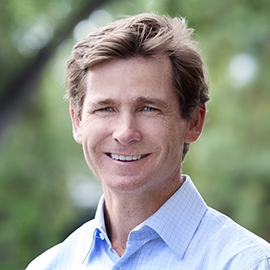– Steven Callander
Join key faculty members from the program as they discuss the tools and skills needed to analyze, integrate, and take ownership of your firm’s beyond-market strategy.
How can you mitigate risk when a crisis strikes? What motivates activists and special interest groups? How do you anticipate the actions of politicians and regulators? Strategy Beyond Markets: Building Competitive Advantage Through Government Relations and Public Affairs is essential for competing in today’s complex, high-stakes business environment. Public and political players can strengthen or weaken you. The media can make or break you. In this one-week intensive program you’ll learn how to develop a more holistic business strategy in order to proactively manage risk and seize new opportunities.

Professor of Political Economy at Stanford Graduate School of Business, is a theorist working at the intersection of business, politics, and society. He builds theoretical models of political and economic institutions (legislatures, markets, bureaucracies, etc.) to understand how they work, how they can be designed better, and how businesses can incorporate “beyond market” issues into their strategy. He has a particular interest in new business models that face and overcome regulatory challenges.

The David S. and Ann M. Barlow Professor of Political Economy at Stanford Graduate School of Business, uses game theory to analyze how elections and political institutions influence policy choices made by government officials. He has published papers on presidential leadership, term limits, and the politics of regulatory enforcement. He is currently doing research on several topics, including electoral accountability, policy entrepreneurship, political risk, and industry-level self-regulation.

Vice President for Public Affairs at Stanford University, reports to the president of the university and oversees university communications, government relations, community initiatives, and special events. He served four years on the White House senior staff for President George H. W. Bush, assuming the post of White House Communications Director following his role as Communications Director of Vice President Bush’s 1988 Presidential Campaign. This followed seven years in the federal government as Assistant Secretary of Labor and Assistant U.S. Trade Representative. He is a senior lecturer at Stanford Graduate School of Business teaching "Political Communications: How Leaders Become Leaders," and also teaches an undergraduate course, "Making Sense of Strategy.”
Strategy Beyond Markets will help you:
INNOVATION AND REGULATION
A common attitude in Silicon Valley—and among innovators generally—is that the quality of the idea will take care of itself and that the government is irrelevant (not to mention stuffy and bureaucratic). Time and time again this attitude has been proven wrong. All markets are regulated and often the rules of the game for a market are set before the market even exists. Understanding the regulatory rules that are in place and designing a business plan that takes them into account is an important part of business innovation. In this session you’ll explore how start-up and established companies alike can build strategies to account for regulatory constraints, and formulate new business strategies that leverage regulation for competitive advantage.
CRISIS MANAGEMENT
What should management do when a crisis focuses the harsh spotlight of public opinion on their organization? Whether it results from a firm's own missteps (think
BP) or from strategic activism or media action (think Greenpeace), crisis is increasingly on the agenda for today's executives. In this session you’ll examine the nature of crises and develop a deeper understanding of where they come from, how they evolve, and what you can do about them. You’ll explore the skills and organizational structures required to prepare for, and productively manage, a crisis to avoid bringing lasting damage to a firm's reputation.
SELF-REGULATION
In this session you’ll analyze how self-regulation can be used as a tool to deal with threats ranging from consumer backlash to the threat of future governmental regulation. You’ll also consider several obstacles that arise as firms and industries try to engage in self-regulation. You’ll learn about recent successes and failures in self-regulation covering issues like privacy, consumer credit, movie ratings, and conflict minerals.
STRATEGIC CORPORATE RESPONSIBILITY
If only successful engagement with interest groups was about doing “good deeds.” It’s much, much more. Key stakeholders often have conflicting interests. How should a company strike a balance among competing interests? Is trying to “strike a balance” even a smart strategy? Should that be the objective? What about the firm’s responsibility to its shareholders? And, regardless of whether the goal is to benefit shareholders or a broader set of stakeholders, how should a firm assess the effectiveness of its Corporate Social Responsibility initiatives? In this session, you’ll assess these questions by analyzing a global pharmaceutical company’s key decisions about intellectual property, pricing, and delivery of new AIDS drugs in developing countries.
Strategy Beyond Markets: Building Competitive Advantage Through Government Relations and Public Affairs is ideal for executives who formulate and implement the strategic direction of their organizations. It's specifically designed for: